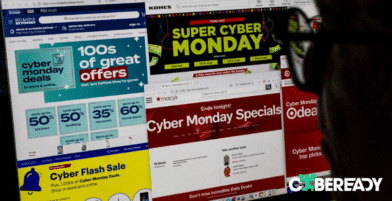Data security practices are essential for all types of work environments. Simply put, data security is the process of safeguarding digital information throughout its entire lifecycle from theft, unauthorized access, or corruption.
When it comes to remote work setup, switching to it can increase security risks for the organization since this environment lacks the same level of security as the office space. Therefore, both companies and workers must stay mindful of the security and technical implications while working remotely.
8 Data Security Essentials for Remote Workers
Working on a remote basis has many advantages, but it also presents some risks to the security and confidentiality of the company’s data. Here is our list of 8 data security essentials for employees working remotely. Consider all of these points while you adapt to the new business environment.
1. Cloud Service
Cloud service is useful to ensure that company data is kept secure when working with remote teams. It gives employees an easy-to-access platform for real-time collaboration and file sharing.
For cyber attackers, breaking into the cloud is much more difficult because the cloud provides users with a secure storage place and handles security risks. It helps users protect their important data from hackers and viruses.
Furthermore, employees can use paid systems, which are available to encrypt cloud storage to add more security.
2. Phishing Awareness
Cybercriminals are exploiting the COVID-19 outbreak via phishing scams. Till now, they have pretended to represent authorized people and impersonate governments, health companies, and IT support providers.
These phishing scams include malicious emails tricking individuals into providing sensitive information, which can compromise the company’s security. Therefore, it is essential for companies to make phishing awareness a part of cybersecurity training programs to educate remote workers since they are more vulnerable to phishing than others.
Remote employees should be trained not to respond to emails, click on links or download attachments from non-verified or unknown senders. If you need help with this, check out CybeReady – we offer cybersecurity awareness training solutions for various sectors, banking, manufacturing, and pharmaceutical industries in particular.
3. Email Encryption
Email is one of the most widely used digital technologies by employees working remotely and can open a backdoor to cyber attackers. Stringent management and encryption of work-related emails are necessary.
The installation of email encryption software can be useful in addition to raising awareness of the vulnerabilities of email. Remote workers should check if their email provider supports email encryption or a technique for their email client to be encrypted to save the content of confidential communication.
4. Updated Software
The regular updating of software on work or personal devices is mandatory. Each software has its security updates and versions with patches, which are important for security.
Performing penetration tests is also a good approach. Updated software boasts faster speed, and the delayed patches help limit the vulnerability of the devices with better security plans.
5. Network Protection
The home network of an employee might not be sufficiently secure. For this, running a security check on their home network is recommended.
Besides, companies should consider setting up a virtual private network (VPN) through which employees can access resources on their network to protect sensitive data against man-in-the-middle attacks.
A VPN provides an encrypted tunnel between remote workers’ devices and the company’s servers. VPNs enable users to send and receive data across networks while protecting their online identity and hiding their IP address.
Many providers offer affordable VPNs with different useful features; however, some VPN brands have security issues that must be checked in advance.
6. Safe and Secure Devices
Lost, stolen, and unlocked devices are easy pickings for cybercriminals. The first line of defense is to look after these business assets and keep them secure at all times.
Remote workers should not leave company devices unlocked at any time. Leaving devices unlocked represents a security risk, even if they live with their close family members. They should practice setting a short timeout period so that the device gets locked automatically while not in use.
Those who use mobile devices should consider using an unlock method, such as a passcode, pattern, or PIN, as these are more secure than using biometric information like voice, fingerprint, or face unlock.
Good password hygiene must be practiced, which includes the use of lengthy passwords, numbers, characters, and unique passwords for different systems and logins. Implementing multi-factor authentication (MFA) is another appropriate option to improve data security for employees working remotely.
7. Company-Approved Devices
Remote-working setup of employees should be the company’s top priority. Ideally, workers should only access company data on devices under their company’s control. Companies should either purchase new devices for their employees or ask them for their hardware requirements for devices on which they access data.
Workers should communicate with their employer before working from a personal device. It is best to avoid accessing company data on outdated devices, which may be vulnerable to malware or unauthorized access.
8. Ring-fenced Business Data
Ring-fencing is a virtual barrier that occurs when some of the company’s assets and data are separated without it being operated as a separate entity. With data ring-fencing, users with no relevant access will be unable to access any sensitive data.
This works as a beneficial method used to further secure the company data because even if a small part of the data has been accessed, it would be of no use without the rest of the secured files.
Conclusion
Protecting highly sensitive data gets much more challenging for teams operating remotely. While the latest technology makes the procedure of accessing documents, accounts, and other information simpler, it poses security risks as well.
With the above-mentioned essentials, companies, together with their remote teams, can handle all sorts of data security issues and move forward with confidence.



















